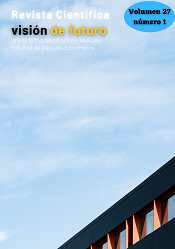Proposal of a new model of personal strategic alignment for human resources professionals in strategic positions
Keywords:
Model; Personnel; Alignment; Strategy; Competencies; Alignment; Strategy.Abstract
The purpose of this article is to share the study developed in the doctoral thesis which proposed a new Model of Personal Strategic Alignment - MAEP - that goes through the identification of purposes, values and beliefs, dreams, future vision, goals and competencies, so that the individual assumes the protagonism of his career and life through the most conscious choices, guided by the reflection of the aspects that, integrated, allow the construction of an identity and the execution of relevant actions in search of a full realization of the individual purpose. This study shows how the model provided an improvement in the self-perception, career planning and development of strategic thinking of the sample investigated and contributed to the development of the competencies of professionals in strategic positions in the Human Resources area, considering the challenges of the current scenario and the trends of this function in the future of work.References
Adamson, L., Lyxell, B. (1996). Self-concept and questions of life: identity development during late adolescence. Journal of Adolescence, 19, 569-582
Albuquerque, L. G. (1992). Competitividade e recursos humanos. Revista de Administração, v. 27, n. 4, out./dez. 1992.
Carvalho, D. E.; De Almeida, M. I. R.; Wright, J. T. C. (2008). ¿Cómo colocar em prática o seu plano estratégico? Utilização da ferramenta de implementação e gestão estratégica do BSCP (Balanced Scorecard Pessoal) no método PEP - Planejamento Estratégico Pessoal. In Estratégias empresariais e globalização de mercados. Lisboa: ISCTE.http://www.atsie.com/Portals/4/artigos/Como%20colocar%20em%20practica%20o%20seu%20plano%20estrategico.pdf
Costa, D.A.D. (2021). Propuesta de un modelo de alineamiento personal para profesionales de formación de RRHH que actúan en niveles estratégicos. Tesis de Doctorado. Universidad Nacional de Misiones – UNaM.
Costa, M.E. (1991). Contextos sociais de vida e desenvolvimento da identidade. Lisboa: INIC, p.20.
Erikson, E. H. (1976). Identidade, Juventude e Crise. Rio de Janeiro, Brasil: Zahar Editores.
Estrada, R.J. Soliz; Moretto Neto, L.; Augustin, E.S. (2011). Planejamento Estratégico Pessoal. Revista De Ciências Da Administração, Florianópolis, V. 13, N. 30, P. 118-145, Mayo-Ago. 2011.
García, H; Miralles, F (2018). Ikigai. Rio de Janeiro, Brasil: Intrinseca.
Harari, Y.N. (2015). Sapiens- uma breve história da humanidade. Porto Alegre:L&PM Editores, p.41.
Harter, S. (1983). Developmental perspectives on self-system. En E. M. Hetherington (Org.), Handbook of Child Psychology (pp. 275-385). N. Y.: Wiley.
Hunt, M. (2010). Dream Makers: fazedores de sonhos. Rio de Janeiro: Qualitymark, p.3.
Joas, H.; Knobl, W. (2017). Teoria Social: Vinte lições introdutórias. Petropólis: Editora Vozes, p.372.
Kofman, F. (2018). Liderança & Propósito. Rio De Janeiro: Harper Collins, P.33.
Lacombe, B. M. B.; Chu, R. A. Policies and practices of human resource management: Strategic and institutional approaches |. Políticas e práticas de gestão de pessoas: As abordagens estratégica e institucional. RAE-Revista de Administração de Empresas, [S. l.], v. 48, n. 1, p. 25–35, 2008. Disponível em: https://bibliotecadigital.fgv.br/ojs/index.php/rae/article/view/36436. Acesso em: 18 fev. 2022.
Magaldi, S.; Salibi, J. (2020). Estratégia Adaptativa. São Paulo: Editora Gente, p.164.
Maslow, A. (1954). Motivation and personality. New York, EUA: Logman.
Marcondes, O. (2015). O Poder de uma visão Inspiradora. São Paulo: HSM do Brasil, p.46-66.
Morin, E. (2004). A cabeça bem-feita: repensar a reforma, reformar o pensamento. 10 ed. Rio de Janeiro, Brasil: Bertrand Brasil, p.120.
Rampersad, H.K. (2010). Seja o CEO de sua vida. Rio de Janeiro, Qualitymark, p.145.
Robbins, S. P. (2010). Comportamento Organizacional. São Paulo: Pearson Prentice Hall, p.159.
Seidl-De-Moura, M.L. et al. (2017). Estudos de Psicologia I. Campinas I 34(2) I 293-303 I abril - junho 2017.
Sinek, S. (2018). Comece pelo porquê. Rio de Janeiro: Editora Sextante, p.68-70.
Santos, J. N. E, Franco, J.H. (2011). Uma possível relação entre trabalho em equipe e aprendizagem organizacional. Revista de Administração. FACES Journal Belo Horizonte · v. 11 · n. 4 · p. 190-206 · out./dez. 2011. ISSN 1984-6975 (online). ISSN 1517-8900 (Impressa)191.
Senge, P. M. (2000). A quinta disciplina: caderno de campo – estratégias e ferramentas para construir uma organização que aprende. Rio de Janeiro: Qualitymark Editora
Shahar. T.B. (2016). Aprenda a ser feliz: o curso de felicidade de Harvard.Portugal: Lua de Papel.
Shavelson, R. J., Hubner, J. J., & Stanton, G.C. (1976). Self-Concept: validation of construct interpretations. Review of Educational Research, 46, 407-411.
Thiry-Cherques, H. R. (2006). O Primeiro Estruturalismo: Método de Pesquisa para as Ciências da Gestão. RAC, v. 10, n. 2, abr./jun. 2006: 137-156.
Tonelli, M.J.; Lacombe, B.; Caldas, M. (2002). Desenvolvimento Histórico do RH no Brasil e no Mundo. In: Manual de gestão de pessoas e equipes; estratégias e tendências. Volume 1. São Paulo: Editora Gente.
Yount, K. R. (1986). A theory of productive activity: the relationships among self-concept, gender, sex roles stereotypes, and work-emergent traits. Psychology of Women Quartely, 10, 63-88
Downloads
Published
How to Cite
Issue
Section
License
Copyright (c) 2022 Denize Athayde Dutra Costa
The works published in this magazine are under the Creative Commons Attribution-NonCommercial 2.5 Argentina license.
Important: The author is the owner of the rights to exploit the contents of the article of his authorship.
You are free to:
Share — copy and redistribute the material in any medium or format.
Adapt — remix, transform and build from the material.
The licensor cannot revoke these liberties as long as you follow the terms of the license.
Under the following terms:
Attribution - You must give appropriate credit, provide a link to the license, and indicate if any changes have been made. You may do so in any reasonable way, but not in a way that suggests that you or your use is endorsed by the licensor.
Non-Commercial - You may not use the material for commercial purposes.
There are no additional restrictions - You cannot apply legal terms or technological measures that legally restrict others to make any use permitted by the license.




















